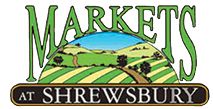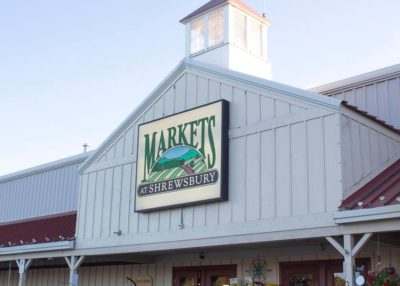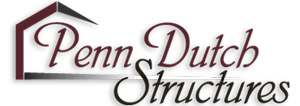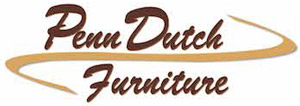The Amish and Pennsylvania Dutch are often grouped together in conversation because of their shared cultural heritage and their deep geographic roots in rural Lancaster County. However, these groups have several unique characteristics that set them apart.
Let’s take a closer look at the origins, religious practices, language, and lifestyle preferences of the Pennsylvania Dutch vs Amish communities to outline the differences and debunk the common misconception that they’re the same.
Who Are the Pennsylvania Dutch?
The Pennsylvania Dutch are a group of German emigrants who fled to America in the 17th century in pursuit of religious freedom. The label “Pennsylvania Dutch” describes the name of both their community and the language they speak.
Origins
The label “Pennsylvania Dutch” is sort of the all-encompassing term for the German immigrants who arrived in Pennsylvania during the 17th and 18th centuries. These people, which include groups we know today as the Amish, Mennonite, and Brethren, first arrived in America in the late 1600s.
In Europe at the time, the Holy Roman Empire had just declared that all states must adhere to the teachings of the Roman Catholic Church — despite having granted the freedom for state leaders to decide their local religion less than 70 years earlier.
The Pennsylvania Dutch were Christian Protestants, mainly adhering to Lutheran, Reformed Christians, and Anabaptist teachings.
Enticed by the idea of William Penn’s “Holy Experiment,” which promised fertile land and the freedom to practice religion peacefully, these refugees left the southern Rhineland of Germany’s “Palatinate” to lay roots in modern-day Pennsylvania.
They settled in southeastern Pennsylvania, where a large population of PA Dutch people still live today. Although they are called the “Pennsylvania Dutch,” they have no relation to Dutch countries, dialects, or culture.
Religion
While they were all Protestants with beliefs rooted in those of early Christianity, the Pennsylvania Dutch religion was comprised of many different denominations. Some people are Lutheran, Anabaptist, Catholic, Moravian, Reformed, etc.
Lifestyle
When it comes to their daily lives, the Pennsylvania Dutch vs Amish lifestyles are pretty different. When the PA Dutch came to America, these different religious groups fell into 2 primary categories: the “Fancy Dutch” and the “Plain Dutch.”
Both groups were made up of men who made a living as farmers or craftsmen with incredible work ethic and skill manship, but The Fancy Dutch were known for their less strict culture.
Most PA Dutch groups today “blend in” with other Americans because they’ve completely embraced the American culture. They use modern technology, drive cars, use cell phones, and live in rural and urban areas.
Some of these people might still dress in distinctive Amish clothing, while others wear “normal” American clothing. Regardless, there’s less of a belief amongst the Fancy Dutch that “worldly” conveniences will hinder their faith and trust in God.
The Plain Dutch on the other hand were and still are known for their strict, plain lifestyles. They haven’t embraced modern technology in the home like the Fancy Dutch have, but they have made some exceptions for the use of business. They are still heavily populated in rural areas and you’ll know when you see one based on their distinct plain attire.
Language
The Pennsylvania Dutch people speak a language also called Pennsylvania Dutch. But the English word “Dutch” is a (mis)translation of the German word “Deutsch,” which refers to the German dialect. So the PA Dutch or Deutsch language actually translates to PA German.
Since the 20th century, the PA Dutch language has been in decline, since most modern PA Dutch people have assimilated into modern American culture and speak mostly English.
Explore Some Classic PA Dutch Food & Recipes →
Who Are the Amish?
The Amish are a small group of people who came to America with the Pennsylvania Dutch in search of the same freedom: a place to practice their religion safely. By definition, the Amish are considered PA Dutch, but not all PA Dutch people are Amish.
Origins
As a smaller group within the Pennsylvania Dutch community, the origins of the Amish are not much different from those of the PA Dutch. They fled from German-speaking countries in the early 1700s to escape religious persecution.
They settled in southeastern PA where the soil was fertile and they could continue making a living out of farming. Today, most Amish are still found in Lancaster and its surrounding counties, but you can also find them in parts of Ohio and Indiana.
Religion
Unlike the Pennsylvania Dutch, all Amish adhere to a single religion: the Germanic tradition of Anabaptism, which believes that baptism should occur during adulthood after confessing faith in God.
Additionally, the Anabaptist faith stresses 3 core values: simplicity, pacifism, and community. Those values and their faith as a whole are a huge part of how the Amish conduct their daily lives. Because of this, the Amish don’t have a church building. Instead, “church” is held right inside their homes with their neighbors and family.
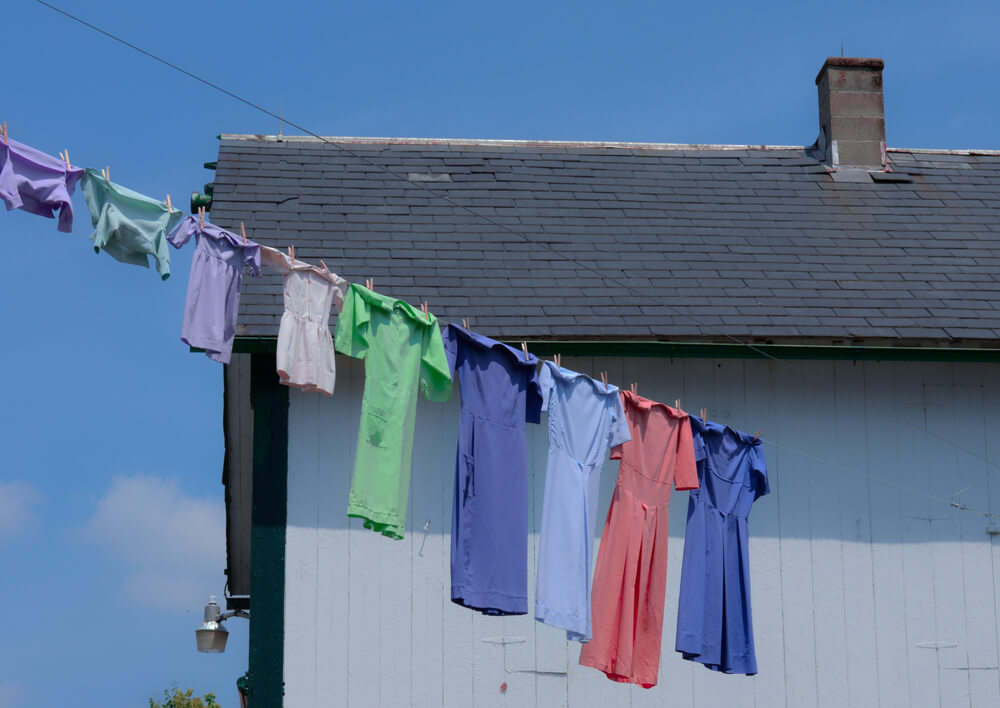
Lifestyle
The Amish lifestyle can be described in a single word: simple. They reject modern conveniences like electricity, cars, and cell phones. The clothing they wear isn’t flashy, nor do they seek out popular brands and fashion trends.
They believe that relying on these “worldly” creations, despite how convenient, can distance themselves in their relationships with God, their families, and their community. Instead, they use alternative power sources like solar or gas that rely on natural resources.
Though they’re strict about having no modern technology in the home, there are Amish communities that have made exceptions strictly for work purposes. Take phones for example — the Amish can use the telephone to conduct business, as long as they don’t use them in their home for socializing, and as long as they don’t actually own one themselves.
The same is true for the use of cars. Some Amish businesses use cars or vans to travel to and from work sites that are outside of the county. As long as they don’t own the vehicle or they don’t use it for personal transportation, some communities will create an exception.
These exceptions, however, are largely dependent on the church’s Pastor and what they deem appropriate or not.
Language
Similar to the PA Dutch people, the Amish speak Pennsylvania Dutch — a German dialect with English influences. Unlike them, however, the PA Dutch language is still the primary language for many Amish folk. Most families speak PA Dutch in the home so children can learn the language from a young age.
Interested in learning more about the Amish Culture? Check out our blog, “Amish Holidays & Traditions.” →
PA Dutch vs Amish Differences: Recap
Based on what we now know about each group, it’s clear that the Pennsylvania Dutch and Amish are 2 distinct communities. Their differences boil down to 3 main differences:
- Scope
- The PA Dutch is a broad group of German immigrants.
- The Amish are a niche group of religious people within that broad PA Dutch label.
- Religion:
- The PA Dutch are made up of a variety of religious denominations.
- The Amish are a smaller sect that believes in the traditional Anabaptist doctrines.
- Lifestyle:
- The PA Dutch are less strict about clothes, material items, and modern commodities.
- Due to their religious convictions, the Amish have strict rules about how to dress and how to live.
PA Dutch vs Amish FAQs
A quick reference FAQ guide to the burning questions you might have related to PA Dutch vs Amish beliefs:
Do the Amish Speak Dutch?
No, the Amish do not speak Dutch. They speak English and Pennsylvania Dutch, which as we mentioned earlier is a dialect of the German language. Most modern Amish folk speak Pennsylvania Dutch inside their community — at church or when conducting business with other Amish men — and they speak English when doing business with those outside of the community.
Are the Pennsylvania Dutch Amish?
Not all Pennsylvania Dutch are Amish, but all Amish are Pennsylvania Dutch. The Pennsylvania Dutch is the broad name for all of the German migrants, of various religions, who fled to Pennsylvania during the 16th century; the Amish are one smaller sect of PA Dutch people who practice Anabaptism.
Is Pennsylvania Dutch German?
Yes, the Pennsylvania Dutch language was derived from the German language, but it also about 15-20% of the English vocabulary.
What is the Amish Religion?
The Amish practice Anabaptism, which believes that adults should be baptized when they’re old enough to declare their faith in Christ on their own.
What is the Pennsylvania Dutch Religion?
Pennsylvania Dutch people practice a variety of religions, including:
- Christianity
- Catholicism
- Lutheranism
- Moravian Doctrine
- Reformed Christianity
- Anabaptism
